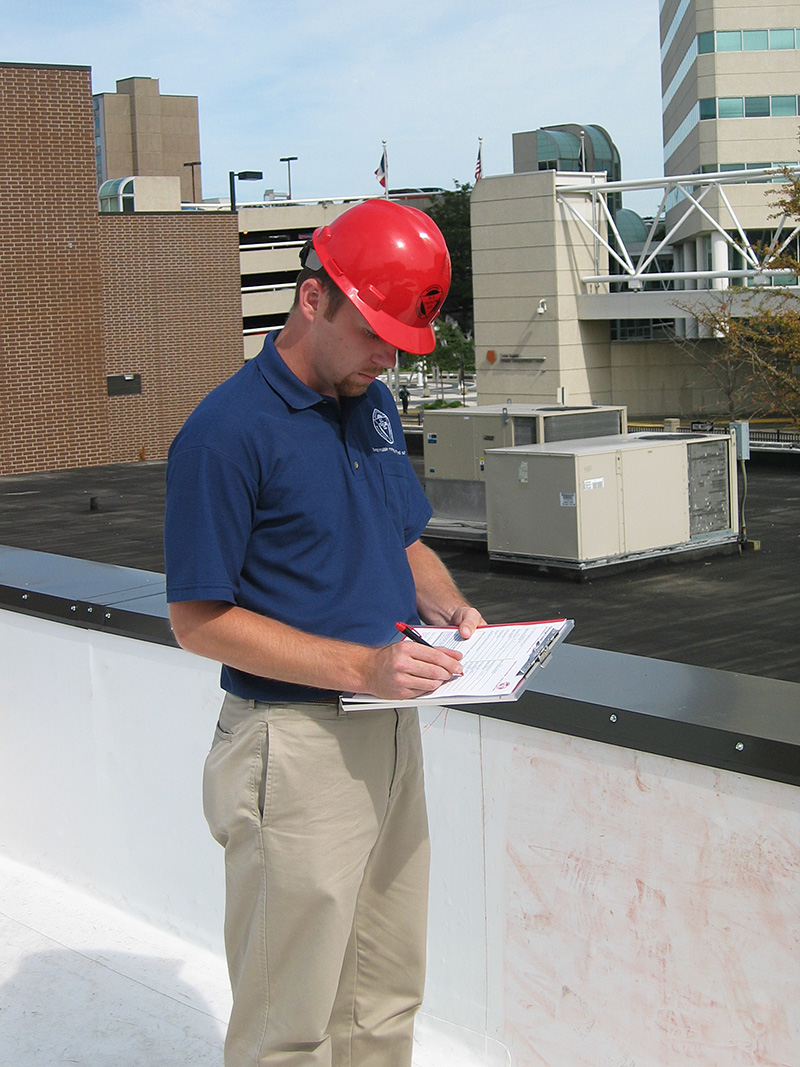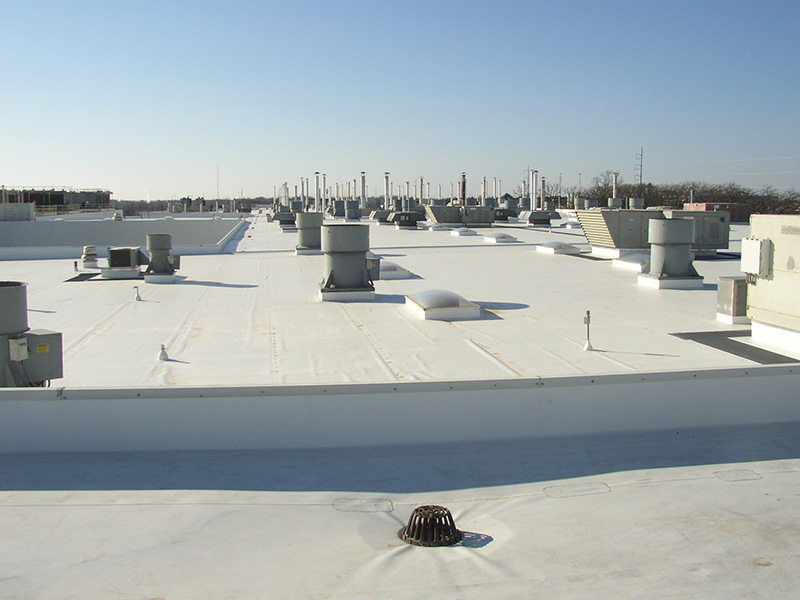9 sustainable roofing strategies.
By Todd M. Kaska
Discussion about sustainable facility management quickly gravitates to lighting and HVAC with little mention of the roof’s role. With careful planning of the roofing system and proper installation, the roof can have a significant impact on waste and energy reduction.
1. Plan to Make the Roof Last
The roofing system you select and the contractor you hire directly impact its life. The longer it performs, the fewer times you reroof and dispose of roofing materials in a landfill. Careful upfront planning during the design of the system and conscientious roofing contractor selection benefits the environment and your budget.
2. Recycle Your Old Roof
When you’re undertaking a reroofing project, consider recycling the construction and demolition waste. An experienced roofing contractor can help put together a plan to identify which materials qualify. The contractor will also be able to source organizations that can recycle, reuse or salvage materials such as metal, roofing membrane, insulation, concrete and stone ballast.
 3. Perform Routine Maintenance
3. Perform Routine Maintenance
Maintaining the roof so it continues to perform effectively also reduces waste. Routine inspections and repairs can improve the longevity of your roof and prevent premature failure. The less you reroof, the fewer roofing materials and construction waste end up in the landfill. Additionally, early detection of leaks can minimize moisture intrusion and maintain the efficiency of insulation, which results in lower utility bills.
4. Restore the Existing Roof
Another strategy to maximize longevity is to restore the existing roof with a coating. Roof coatings can slow the aging process by adding an extra layer of protection to the surface of the roof. Additionally, it reduces expansion and contraction, thereby reducing stress and increasing the roof’s useful life.
Most roof systems (single-ply, built-up, metal, foam and modified bitumen) can be coated. Eligibility for coating is determined by the condition of the existing roof, its location, slope, presence of ponding water and exposure to chemicals, high heat and UV.
5. Assess Thermal Efficiency
Insulation is the most widely understood energy-efficient roofing strategy. If your insulation isn’t performing as intended, heat is escaping in winter and entering in summer, making HVAC systems work harder to compensate. The thermal efficiency of wet insulation is severely diminished, so when leaks are repaired, attention must be paid to more than just the surface of the roofing membrane. Expect to be alerted during your annual roof inspection if crushed or wet insulation is compromising thermal performance.
6. Consider Insulation Levels
When embarking on a new roofing project, obtain an estimate of annual energy usage costs related to insulation levels of various roof system assemblies. An informed decision involves more than compliance with the local jurisdiction’s energy codes. A professional roofing contractor can employ tools like the National Roofing Contractors Association’s EnergyWise Roofing Calculator to help you evaluate virtual roof assemblies for thermal efficiency, and the associated estimated heating and cooling cost reductions resulting from each approach.
7. Ask How It’s Installed
The value of thermal roof insulation can be maximized through design and installation practices. During your next reroofing project, ask your contractor how they plan to install the system. The following can greatly reduce gaps and voids and increase energy efficiency:
• Multiple layers of insulation with staggered joints.
• Dimensionally stable products.
• A ballasted system, a mechanically fastened bottom layer and fully adhered remaining layers, non-thermal bridging fasteners, or spray polyurethane foam to eliminate thermal bridging.
8. Cool Down the Roof
Decreasing the surface temperature of the roof will also reduce your facility’s energy consumption. A cool roof, according to the Cool Roof Ratings Council (CRRC), “reflects and emits the sun’s heat back to the sky instead of transferring it to the building below. ‘Coolness’ is measured by two properties: solar reflectance and thermal emittance. Both properties are measured from 0 to 1 and the higher the value, the ‘cooler’ the roof.”
Reflective roofs reduce the demand from the electrical grid because air-conditioning equipment doesn’t need to run as much, which decreases emissions from power plants and reduces your facility’s carbon footprint. According to the CRRC, typical savings are in the range of 10% to 30% for cooling energy and extended service life of air-conditioning equipment.
An additional benefit is longer service life. Because of decreased UV degradation and less expansion and contraction, cool reflective roofs are expected to last longer and require less maintenance. Decreasing the surface temperature of the roof can be achieved by either installing a cool roof system or a cool roof coating.
 9. Install Daylighting Skylights
9. Install Daylighting Skylights
Lighting is the second largest consumer of electricity in commercial facilities behind HVAC. Daylighting skylights can be added to the roof to reduce the amount of artificial light (and energy consumption) required.
Careful analysis should be undertaken to determine the optimum daylighting skylight strategy to maximize efficiency and/or increase illumination levels. Qualified professionals can provide you with a plan that includes estimated annual energy savings in kilowatt hours (kWh) per year as well as a prediction of annual savings based on your utility rates.
— Todd M. Kaska is senior vice president of technical services in D. C. Taylor Co.’s Powder Springs, Georgia, office. He has 25 years of experience working for the commercial/industrial roofing contractor.
